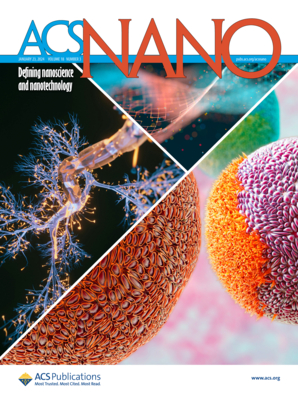tert-Butoxycarbonyl-Modification Driven Disturbance of Molecular Ordering Enables High-Efficiency Dual Drugs Co-Assembly for Synergistic Tumor Inhibition
IF 15.8
1区 材料科学
Q1 CHEMISTRY, MULTIDISCIPLINARY
引用次数: 0
Abstract
The development of carrier-free drug delivery systems (CDDS) for tailored drug combinations posed a significant challenge, particularly in achieving efficient co-assembly while maintaining therapeutic efficacy. Herein, we proposed a co-assembly strategy based on molecular engineering. Paclitaxel (PTX) and 7-ethyl-10-hydroxycamptothecin (SN38) were chemically modified with tert-butoxycarbonyl (BOC) groups. The successful incorporation of the BOC groups was confirmed by proton nuclear magnetic resonance and mass spectrometry analyses. Further characterization using polarized light microscopy and X-ray diffraction revealed that this modification significantly reduced the crystallinity of both drugs, while simultaneously disrupting their original ordered stacking structure. Molecular dynamics simulations indicated that BOC modification increased molecular spacing, reduced stacking density, and expanded molecular volume, resulting in a looser molecular packing arrangement. This structural alteration enabled the modified drug molecules to efficiently coassemble with α-tocopherol succinate (α-TOS) into spherical nanoparticles at a nearly predefined mass ratio. The resulting nanoparticles exhibited a high drug loading capacity of 52.66% and remained stable at 4 °C for over 50 days. Notably, these nanoparticles displayed controllable release characteristics at pH 5.0. Both in vitro and in vivo studies demonstrated the BOC-modified drugs retained their bioactivity. When co-assembled with α-TOS, the nanoparticles exhibited a significant synergistic antitumor effect and suppressed tumor metastasis through downregulation of matrix metalloproteinase-9 (MMP-9) expression. This study provided a solid theoretical foundation and innovative approach for the development of CDDS, utilizing molecular-scale regulation for drug co-assembly.

求助全文
约1分钟内获得全文
求助全文
来源期刊

ACS Nano
工程技术-材料科学:综合
CiteScore
26.00
自引率
4.10%
发文量
1627
审稿时长
1.7 months
期刊介绍:
ACS Nano, published monthly, serves as an international forum for comprehensive articles on nanoscience and nanotechnology research at the intersections of chemistry, biology, materials science, physics, and engineering. The journal fosters communication among scientists in these communities, facilitating collaboration, new research opportunities, and advancements through discoveries. ACS Nano covers synthesis, assembly, characterization, theory, and simulation of nanostructures, nanobiotechnology, nanofabrication, methods and tools for nanoscience and nanotechnology, and self- and directed-assembly. Alongside original research articles, it offers thorough reviews, perspectives on cutting-edge research, and discussions envisioning the future of nanoscience and nanotechnology.
 求助内容:
求助内容: 应助结果提醒方式:
应助结果提醒方式:


